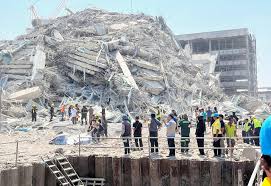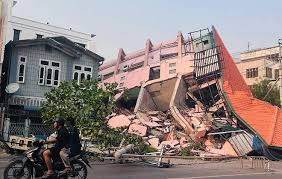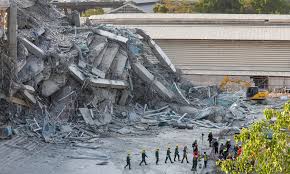Advertisements
The stability of the ground beneath our feet is something many of us take for granted. However, the threat of earthquakes is a reality for countless regions around the world.
Identifying whether your city is at risk is a crucial step in ensuring the safety of your family and community. While some places are more prone to earthquakes due to their geographic location, other areas can be surprisingly vulnerable. 🏠
Advertisements
This article offers an in-depth analysis of earthquake risks in cities, highlighting the most susceptible regions and the factors that increase the likelihood of these natural phenomena occurring.
We’ll explore how different soil types, fault lines, and even urbanization can influence the magnitude and frequency of earthquakes. We’ll also debunk some common misconceptions about where and when earthquakes occur.
Advertisements
Once you understand the risk level in your area, preparation becomes essential. Below, you’ll find a comprehensive set of tips and strategies to protect your home and loved ones, from organizing your living space to creating an effective emergency plan.
These practical steps can make a significant difference in crisis situations, increasing the chances of safety and well-being amidst the chaos. 🚨
Being informed and prepared are the best defenses against natural hazards. By understanding your city’s seismic potential and implementing preventative measures, you not only promote the safety of your own home, but also contribute to the resilience of your entire community. Explore the protective measures outlined below and take control of your safety today.

Understanding Seismicity in Your Region
Before taking any preventive measures, it is crucial to understand whether your city is located in an area at risk of earthquakes. In Brazil, although seismic activity is relatively low compared to regions such as Japan and California, there are areas that are more likely to experience seismic events.
The country's seismicity map shows that regions close to Acre, Maranhão and Rio Grande do Norte record more frequent seismic activity.
Recommended Articles
The Brazilian Geological Survey (CPRM) is one of the main sources of information on seismic activity in the country. They provide up-to-date data on earthquake occurrences, which can be accessed to check the situation in your region.
In addition, universities and geophysics research centers also provide studies and reports that can help in understanding local seismic risk.
If you live in an area with a history of earthquakes, it is important to heed the guidance of local authorities.
They provide specific guidelines for emergency situations that may be crucial during a seismic event. Knowing the seismic history of your area is the first step to adopting effective protective measures.
Prevention and Safety Measures
Pre-Earthquake Preparation
Preparation is key to minimizing the impact of an earthquake. Start by assessing the structure of your home or workplace. Make sure your buildings comply with local building codes that consider seismic resistance. If you live in an older building, consider making improvements to strengthen the structure.
Additionally, identify safe spots in your home, such as under sturdy tables, where you can take shelter during an earthquake. It is a good idea to secure heavy furniture, such as bookcases and cabinets, to prevent them from tipping over and causing injury. Keep an emergency kit handy, containing drinking water, non-perishable food, medicines, and flashlights.
- Review evacuation routes and participate in emergency drills if available.
- Keep emergency contacts up to date and close at hand.
- Teach all family members about procedures to follow during an earthquake.
During the Earthquake
During an earthquake, the first priority is to protect yourself and others. If you are indoors, take immediate shelter under a sturdy table or in an indoor corner, away from windows and objects that could fall. Avoid using elevators and try not to run away, as sudden movements can result in injury.
If you are outdoors, move to an open area away from buildings, trees, and power lines. In public places, follow the instructions of authorities and remain calm. If you are driving, pull over in a safe place and stay inside your vehicle until the shaking stops.
- If you are near the sea, consider the possibility of a tsunami and move away from the coast.
- Keep calm and don't run, this can prevent accidents and unnecessary injuries.
- Stay informed via radio or other media about safety instructions.
What to Do After an Earthquake
Damage and Safety Assessment
After an earthquake, it is vital to assess the safety of your surroundings. Check for injuries and provide first aid if necessary. Contact emergency services for medical assistance and follow the instructions provided by local authorities.
Inspect your home or workplace for structural damage, such as cracks in walls and ceilings. Turn off the power, gas, and water if you suspect leaks or faults. Avoid using candles, matches, or any other open flame until it is safe to do so to prevent fires caused by gas leaks.
- Photograph the damage for insurance purposes and personal records.
- Avoid damaged buildings until they are declared safe by competent professionals.
- Stay up to date on the situation through reliable media outlets.

Assistance and Recovery
After an earthquake, recovery can be a long and challenging process. Make sure your family is safe and seek out designated shelters if necessary. Local authorities and humanitarian organizations often provide assistance in the form of food, water, and temporary shelter.
If your home has suffered significant damage, contact your insurance company to begin the claim process. Relief organizations can provide financial and logistical support during recovery. Additionally, consider joining community support groups, which can provide helpful resources and information for dealing with the aftermath of an earthquake.
- Contribute to community cleanup and rebuilding efforts.
- Attend meetings and workshops to improve resilience against future disasters.
- Share experiences and learnings with the community to increase awareness and preparedness.
Additional Information and Resources
Reliable Sources of Information
Staying informed with reliable sources is essential to addressing the threat of earthquakes. Use meteorological services, such as the National Institute of Meteorology (INMET), and government platforms that monitor natural disasters. Social media can be useful, but it is important to verify the authenticity of information before sharing or acting on it.
Smartphone apps can also provide real-time earthquake alerts, allowing you to prepare quickly. Non-governmental organizations and NGOs often make disaster preparedness guides and manuals available for free download.
- Sign up for emergency SMS alerts if available in your area.
- Join online forums and groups that discuss earthquake safety.
- Attend seminars and lectures on safety and disaster preparedness.

Conclusion
Finding out if your city is at risk for earthquakes is an essential step in ensuring the safety of your family and community. By understanding the risks, you will be better prepared to take effective preventive measures. First, check local seismic risk maps and use earthquake monitoring apps. These tools can provide up-to-date information on seismic activity in your area, allowing you to act quickly in the event of an emergency.
Additionally, it is crucial to strengthen the structure of your home to withstand earthquakes. Consider hiring a professional to assess and reinforce the structural integrity of your home. Keeping an emergency kit with essential items such as water, non-perishable food, flashlights, and medications is also a good practice to increase your preparedness.
Furthermore, education and practice are key. Involving your family in evacuation drills and response plans can make all the difference. By doing so, you not only improve your personal safety, but also contribute to the resilience of the entire community. 🌍 Remember: being prepared is key to facing any challenge that nature may present. So don’t wait any longer and start protecting what matters most today!




